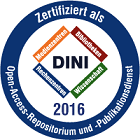Schmitz, Maximilian: Structural and Functional Characterization, Targeted Degradation, and Inhibition of Cyclin-dependent Kinases Involved in Transcriptional Regulation. - Bonn, 2025. - Dissertation, Rheinische Friedrich-Wilhelms-Universität Bonn.
Online-Ausgabe in bonndoc: https://nbn-resolving.org/urn:nbn:de:hbz:5-80486
Online-Ausgabe in bonndoc: https://nbn-resolving.org/urn:nbn:de:hbz:5-80486
@phdthesis{handle:20.500.11811/12749,
urn: https://nbn-resolving.org/urn:nbn:de:hbz:5-80486,
author = {{Maximilian Schmitz}},
title = {Structural and Functional Characterization, Targeted Degradation, and Inhibition of Cyclin-dependent Kinases Involved in Transcriptional Regulation},
school = {Rheinische Friedrich-Wilhelms-Universität Bonn},
year = 2025,
month = jan,
note = {Transcription-associated cyclin-dependent kinases (CDKs) are serine/threonine-directed kinases that, when activated by their corresponding cyclin subunits, play a crucial role in tightly regulating key transcriptional processes in higher eukaryotes. Transcriptional CDKs orchestrate multiple phosphorylation events in the C-terminal domain of RNA polymerase II (Pol II), thereby regulating the Pol II-mediated transcription cycle through its various stages, from initiation to elongation and termination. Dysregulation of the transcription machinery can promote cancer initiation and progression. In particular, dysregulation of transcription elongation kinases, Cdk9 and Cdk12, has been associated with various types of cancer, underscoring their importance as potential therapeutic targets. As a result, the development of small molecule inhibitors and degraders targeting transcription elongation regulating CDKs has emerged as a central focus in advancing cancer therapeutics.
This thesis presents insights into the molecular mechanism of SR-4835, a small molecule inhibitor with selective activity against human Cdk12 and Cdk13. The inhibition specificity, binding characteristics, and potency of SR-4835 were investigated through a combination of biochemical and structural analyses. The high selectivity of SR-4835 for Cdk12 and Cdk13, compared to other transcription- and cell-cycle-regulating CDKs and members of the CMGC kinase family, was demonstrated by in vitro radioactive kinase activity assays. The crystal structure of the Cdk12/cyclin K complex with SR-4835 was resolved at a resolution of 2.68 Å resolution, revealing a distinct hydrogen bond network formed within the kinase hinge region, providing the basis for the selective binding of SR-4835 to both Cdk12 and Cdk13. Comparing the efficacy of SR-4835 with other CDK-targeting inhibitors in radioactive activity assays underscores its potential as a promising candidate for targeted anti-cancer therapy. Additionally, the structural insights provided lay the groundwork for optimizing and designing reversible Cdk12-specific inhibitors, potentially facilitating the basis for the development of novel cancer therapeutics. Moreover, SR-4835’s molecular glue capability was identified and characterized, demonstrating its ability to induce the formation of a ternary complex between the E3 ligase adaptor protein DDB1 and the Cdk12/cyclin K heterodimer. The interaction was confirmed through analytical HPLC, dynamic light scattering and pulldown analyses in comparison to known cyclin K degrader compounds CR8 and dCeMM2. The crystal structure of the SR-4835-induced ternary complex of DDB1 and Cdk12/cyclin K was solved at 3.9 Å resolution, revealing crucial interactions between the surface-exposed benzimidazole moiety of SR-4835 and an arginine residue (R928) in DDB1 for complex formation.
Overall, this work provides key insights into the molecular basis driving the selectivity of SR-4835 towards Cdk12/Cdk13, while also revealing its gain-of-function molecular glue capability by facilitating the recruitment of DDB1.},
url = {https://hdl.handle.net/20.500.11811/12749}
}
urn: https://nbn-resolving.org/urn:nbn:de:hbz:5-80486,
author = {{Maximilian Schmitz}},
title = {Structural and Functional Characterization, Targeted Degradation, and Inhibition of Cyclin-dependent Kinases Involved in Transcriptional Regulation},
school = {Rheinische Friedrich-Wilhelms-Universität Bonn},
year = 2025,
month = jan,
note = {Transcription-associated cyclin-dependent kinases (CDKs) are serine/threonine-directed kinases that, when activated by their corresponding cyclin subunits, play a crucial role in tightly regulating key transcriptional processes in higher eukaryotes. Transcriptional CDKs orchestrate multiple phosphorylation events in the C-terminal domain of RNA polymerase II (Pol II), thereby regulating the Pol II-mediated transcription cycle through its various stages, from initiation to elongation and termination. Dysregulation of the transcription machinery can promote cancer initiation and progression. In particular, dysregulation of transcription elongation kinases, Cdk9 and Cdk12, has been associated with various types of cancer, underscoring their importance as potential therapeutic targets. As a result, the development of small molecule inhibitors and degraders targeting transcription elongation regulating CDKs has emerged as a central focus in advancing cancer therapeutics.
This thesis presents insights into the molecular mechanism of SR-4835, a small molecule inhibitor with selective activity against human Cdk12 and Cdk13. The inhibition specificity, binding characteristics, and potency of SR-4835 were investigated through a combination of biochemical and structural analyses. The high selectivity of SR-4835 for Cdk12 and Cdk13, compared to other transcription- and cell-cycle-regulating CDKs and members of the CMGC kinase family, was demonstrated by in vitro radioactive kinase activity assays. The crystal structure of the Cdk12/cyclin K complex with SR-4835 was resolved at a resolution of 2.68 Å resolution, revealing a distinct hydrogen bond network formed within the kinase hinge region, providing the basis for the selective binding of SR-4835 to both Cdk12 and Cdk13. Comparing the efficacy of SR-4835 with other CDK-targeting inhibitors in radioactive activity assays underscores its potential as a promising candidate for targeted anti-cancer therapy. Additionally, the structural insights provided lay the groundwork for optimizing and designing reversible Cdk12-specific inhibitors, potentially facilitating the basis for the development of novel cancer therapeutics. Moreover, SR-4835’s molecular glue capability was identified and characterized, demonstrating its ability to induce the formation of a ternary complex between the E3 ligase adaptor protein DDB1 and the Cdk12/cyclin K heterodimer. The interaction was confirmed through analytical HPLC, dynamic light scattering and pulldown analyses in comparison to known cyclin K degrader compounds CR8 and dCeMM2. The crystal structure of the SR-4835-induced ternary complex of DDB1 and Cdk12/cyclin K was solved at 3.9 Å resolution, revealing crucial interactions between the surface-exposed benzimidazole moiety of SR-4835 and an arginine residue (R928) in DDB1 for complex formation.
Overall, this work provides key insights into the molecular basis driving the selectivity of SR-4835 towards Cdk12/Cdk13, while also revealing its gain-of-function molecular glue capability by facilitating the recruitment of DDB1.},
url = {https://hdl.handle.net/20.500.11811/12749}
}






